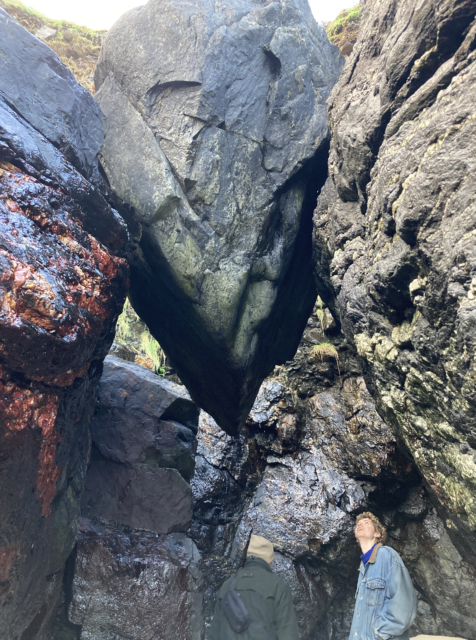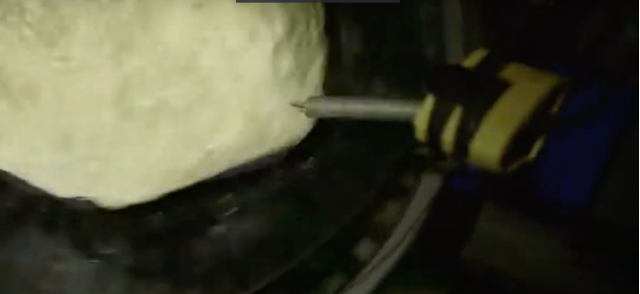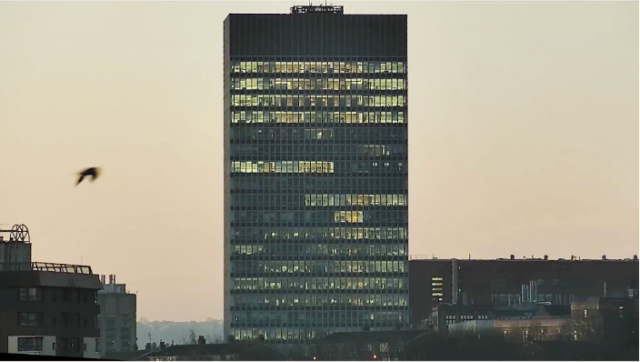Sonic Rock Interactions – 2023

Geological Time and Stone Turntable R&D – 2
Developing Ideas
The descriptions below show:
1.introduction
2.Initial explorations
3. Artists with related practices
4. Thinking round the processes
5. Possibilities
1.Introduction
This post is a collection of developing ideas and links to artists and their work I came across during my explorations for the project Geological Time and Stone Turntable R&D. My plan has been to explore writing sound in to rock, writing particularly seismic sound I’d recorded at Bristol University (The Unsettled Planet/ Brigstow Institute). We have successfully written into rock, but questions remain around how this can further my/our understanding of the materiality of the ground underfoot, and how it could be brought to our attention with this rock?
By investigating other work exploring sound and rock materials I’ve felt encouraged to ask more critical questions about my interaction with stone. Having successfully imprinted rock with sound, I’m able to start to contextualize my practice about the earth’s activity and our /my relationship to it.
For instance, why did I choose to use a mechanical cutting method to write into the rock? Why am I interested to hold previous recordings gathered from tectonic movements rather than highlighting the texture of the host rock record itself? Why would I want to show the work on a turntable, and do I want to show the work on a turn table? How much would performance be part of showing the work ideas?
Whilst exploring processes around reading and writing into rock, Lorenzo Prati who was one of the artists I consulted commented, “Resonance as a notion beyond the physical sense seems relevant to your project?” I have been interested to explore and find out about these possibilities.
2.Initial explorations
Firstly, here below are the steps I took towards cutting rock, the processes and rock type I found and the artists I came across who also cut or sounded out rock. I spoke to the two artists from Coppersounds, Sonny Lee Lightfoot and Issac Stacey, with whom I have a long running conversation about this process. Advice also came from sculptors and stone masons Rod Harris and Rene Rice about types of rock and where I could find them, what rock was available and how would I write information into it? https://www.coppersounds.co.uk/projects

Copper Sounds – Rock Record -picking up sound from contact with the contours of the rock
I spoke to Neil and Jay at Design Forge Bristol, https://bristoldesignforge.co.uk/ who advised me about their laser process and the burning of a detailed accurate visual picture of the sound wave via a vector file. Their experience was with slate, but they were willing to try other rock. I would like to explore this in the future, but at the time I had only the where with all to explore one process which I chose mechanically cutting the rock like vinyl.
3. Artists with related practices
I’m very grateful to artist Graham Dunning for recommending artists whose practises involved lathe cutting live as a performance practice https://grahamdunning.com/


Left Graham Dunning – Mechanical Techno https://grahamdunning.com/blog/
Right Handheld record inscription – a tattooed record – Furrowed Sound https://www.instagram.com/p/Cs_s1oANnBw/?img_index=1
Dylan Beattie. Furrowed Sound – http://furrowedsound.co.uk/. “Playing a modified vinyl record lathe, he incorporates live disc inscription into performance and creates fixed media work involving unusual and experimental ‘record cutting”.
Andrea Borghi https://andreaborghi.com/ and https://andreaborghi.com/project/texts_und/ “magnification of sound waves seen in stone.”… “His work focuses on the relationship between sound and matter. His practice is based on oriented and multidisciplinary research processes, and includes sculptural objects, installations, obsolete media and electronics.”


Left Texts_und | 2017-19 Andrea Borghi
Right Chavez-Maria_Topography of Sound-Vinyl Groove
Maria Chavez https://wallach.columbia.edu/Uptown-23/Maria-Chavez and http://mariachavez.org/ “who repurposes the detritus of vinyl into sonic sculptures, comparable to improvised musique concrete pieces.”
I explored vinyl cutting and spoke to a few adventurous cutters, but they hadn’t the equipment for cutting rock. Although he needed persuading at first, Henry Bainbridge, an experienced Bristol vinyl cutter, took up the challenge. The equipment needed to cut rock needed to be specialised in various respects. https://www.dubstudio.co.uk/
4. Thinking round the processes
At the same time as this was developing, I was able to contact artists
Dr Lorenzo Prati and Dr Mike Blow (referred to here as LP and MB) who introduced me to other artists work who were pushing the ideas of writing or reading rock both technically and conceptually. Computer programmer Mike Tonks was able to question my assumptions while I was trying to take in ideas.
My interest is in investigating the material of this noisy and sonic planet. I wanted to work with and was curious about presenting, the seismic earth activity digital recordings I had. I also wanted to expand the ideas, which by its nature is a work in progress. So, guessing at various processes I thought up questions to put to LP and MB. I asked about the use digital hole punching, 3d scanning, spectrograms, radio waves, resonance and memory.
LP introduced the word ‘resonance’ opening up possibilities that I could think about. He commented, “Is ‘listening’ (Leafcutter Jon’s piece – Peaks) a more poetic term for sonification or an attitude towards the world (as proposed by Jean Luc Nancy) which can reveal resonance? Resonance as a notion beyond the physical sense seems relevant to your project?” This was certainly a new direction of thought in this interesting conversation.
I chose to write into rock with seismic sounds rather than aim to receive resonances from rock. Various artists have turntables with rock discs where they are reading either the impact from the surface like Copper Sounds or interestingly picking up, and recording, electromagnetic fields and conveying them by sonifying them via synthesisers Gerard Gormely and Charles Richards work 2018 at https://www.soncities.org/current/open-lab-concrete-dreams-of-sound
For me initially in presenting the sounds, the familiar equipment was key to help the onlooker understand that the sound was being read from the grooves in the rock. Even though with closer inspection you can also see sound was coming from the friction/impact of the stylus in the rock itself.
Copper Sounds (shown below) have a pickup to sense the impact of the contours of the rock on the turntable.

Photo from Copper Sounds
John Burton aka Leaf cutter John says,” I’ve built this turntable, well, it’s got four turntables on it. You can put rocks on it and then you put a stylus on the rock and, essentially, listen to it. I think I’m going to try and connect them to my synthesisers and see what comes out.” https://nowthenmagazine.com/articles/leafcutter-john-ive-built-this-turntable-you-put-rocks-on-it-and-listen-to-them-music-in-the-round-peak-district



Left Leafcutter Jon
Mid Leafcutter Jon
Right @gormelygerard
Geotones, a work by Charlie Richardson and Gerard Gormely, in which “stones’ resonant frequencies are activated, recorded, and resonated through the stones; and modulated by a modular synth patch that people can use to compose with.” @gormelygerard
Natural resonances
I will dive into the most poetic and least mechanical of these ideas and attempt to show what I understand from them.
LP commented on the idea of the material, rock itself, having a memory. Could you ‘read’ a rocks’ natural resonance? Does it contain a memory of itself. An idea akin to Rupert Sheldrakes notion of ‘morphic resonance’, which sets the hypothesis that matter has memory because “memory is inherent in nature” https://www.sheldrake.org/research/morphic-resonance/introduction . I’d listened to a radio programme (The Birth of Music R4) and heard about Jem Finer and Jimmy Corti’s idea a standing stone retaining the resonance of the memory of sound like a neolithic stone usb stick. (the Gurdi Stone zine 2023)
Could you therefore then tune into these resonances like you can tune into radio waves or indeed between radio stations? Khan discusses in his article ‘Three Receivers’ that the suggestive ‘voices’ from the radio tapping into the past and the future, have been influential. https://www.jstor.org/stable/1146550 .
LP comments, “Maybe the noise of the stylus which cuts the rock and writes the music is the sound of the long-time which has taken to make it; this is physically and morphologically engrained in the material, and it is impossible to get rid of. I can imagine that the same exact noise could be found using a radio and tuning it to the rock. Or could be broadcasted from the rock to the radio?”
I like the slippage between the now and the long-time past in LP’s comments bringing together ‘reading’ rock, memory and geological time.“Maybe the noise of the stylus which cuts the rock and writes the music is the sound of the longtime which has taken to make it;”
Hole punches
I asked, if there anyway there could be digital information read out from a rock, if you were to use 0s and 1s punched into the rock. Like a stone age CD. With the info written out like they did on the original cardboard punch cards?
Mike Blow (referred to as MB) said,
“In theory yes, of course. A mark could be a 1 and a space a 0 (or, like the way CDs work, the change from a mark to a space, or a space to a mark, could be a 1, and a continuing mark or space could be a 0). The issue is the amount of info you need to read. Consider a CD quality recording for 1 second of audio it has 44,100 samples each with 16 bits = over 700,000 marks or spaces!

Photo Lorenzo Prati
Scanning and mapping
My here question was,” “You could encode the music in stone without engraving it and instead use a scanner ?” MB commented, “…. certainly, you could have some kind of laser scanner, possibly hand-held like Nam June Paik’s Random Access piece with the hand held tape head. You can engrave slate with a decent power laser cutter, of the kind you find at FabLab’s. Might be interesting to engrave the smallest sine or square wave you can on a piece of slate and see how fast you have to move the laser reader to get an audible frequency.
MB added, “if we are talking scanning the surface of the rock, I can imagine the texture could be translated into a musical score through some transformation / mapping process. That might be really interesting; however, this would only work one way I guess, I don’t think you could easily shape the rock to record music into it. That’s essentially a more severe form of engraving anyway, I suppose. But imagine different textured slices of rock being put next to each other and read sequentially to make a composition… sounds interesting!”
LP commented, “Radio can be used for geological mapping https://www.tandfonline.com/doi/abs/10.1080/00206816109473649 (interestingly the machine described here has a sonic output), but is there something about the noise and interference that can bring us closer to the unimaginable geological timescale of rocks and deep time?”
I asked, “Are there any examples of 3D scanning superimposed onto or into a material – that you’ve come across?”
LP commented, “3D scanning could be another means of reading information out of a rock, leading to a digital image of it (in point cloud format for example) which can be modified or interacted with virtually. See for example ‘Common Ground’ by Gareth Proskourine-Barnett https://g-p-b.studio/Work-1 .
LP described the use of this software from Francesco Myles Sciotto’s software Kosmos. “This aims to create new transmodal approaches of mixing music and architecture where point cloud spatial information and spectral audio information can be manipulated at the same time in the same ‘playing field’ using 3d virtual models. Using an approach like this you could ‘encode’ a piece of audio onto a 3d scan of a rock – effectively superimposing them both as spatial data, one wrapped onto the other.”
https://www.academia.edu/53809807/Archimusic_A_New_Po%C3%AFesis
Below a non-contact laser triangulation sensor from Micro-Epsilon is helping a German University to create musical melodies and rhythms by scanning the shape of everyday objects. http://www.micro.elipson.com/music

https://www.youtube.com/watch?v=Lyc7VNsxjoA
Artist Tim Feeney – his caption “automatic writing” @theothertimfeeney. For me it’s like a handheld stylus playing the planet.



Photo Tim Feeney
These were some of the fragments of speculative ideas thrown up in discussion with LP and MB, along with the mentioning of all these inspiring artists mentioned above, and they are now up for exploration and have offered me new thoughts about resonance and understanding the perception of materials, and particularly rock.
5.Possibilities
So, lastly, I will end this long post with a quick opening of doors for next steps and some possibilities with the disc of rock already cut.
As an installation the turntable with rock would work in different situations, either in a gallery or in nature. Having the rock in a performance with film or working with improvising musicians such as I have before with Dominic Lash and Angharad Davies are options. Highlighting the fabric of the material in tune with the ideas of the ‘Long Player’ (1995) Jem Finer or Alvin Lucier’s tape piece ‘I am sitting in a room’ (1969), where the stylus wears away the recorded sound in the gypsum, are all possibilities. Mixing the sound as it plays from the rock or several rocks in performance, or mixing several different rock types would offer exploration. Trying different rock to write into is another route, where marble and granite may offer challenges. Creating smaller rock discs for DJs and turntablists to try out may be interesting.
This project’s full title Geological Time and Stone Turntable R&D. Other parts of this R&D can be seen on this website called The Groove, The Lizard is a lizard, Skin and Ice and Flags on the Beach.
End